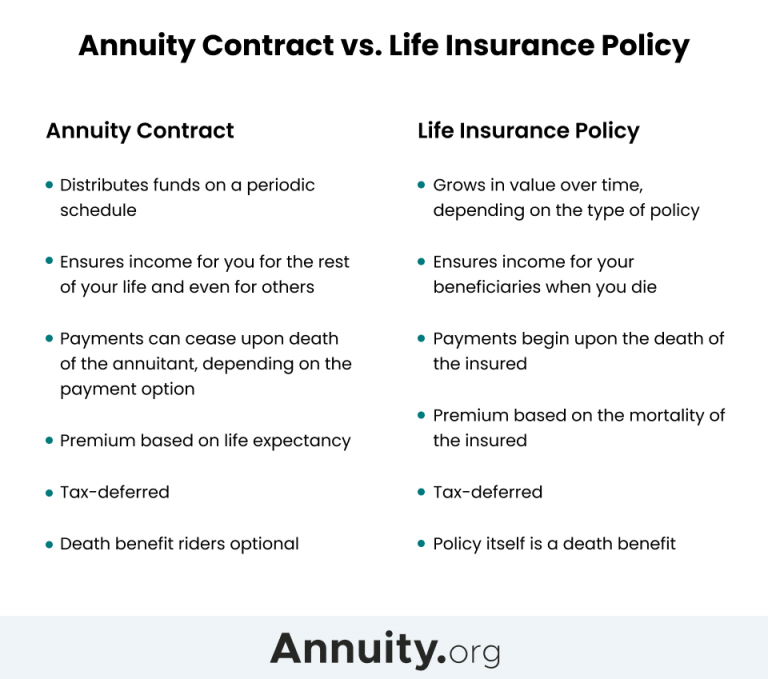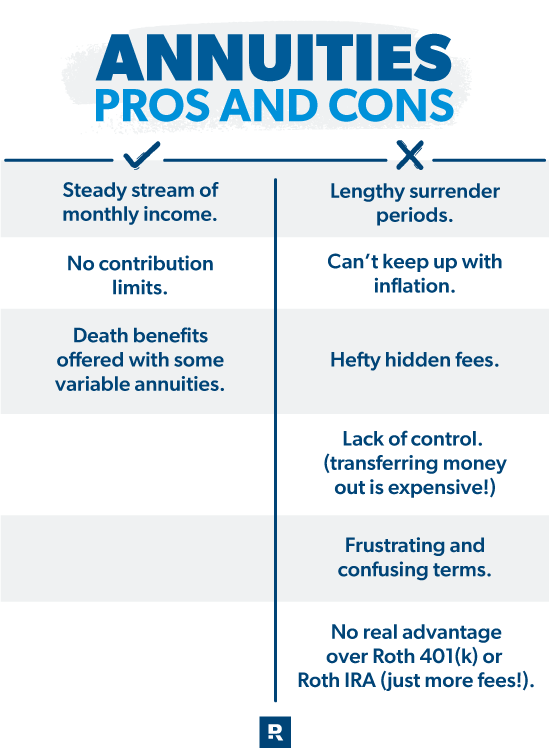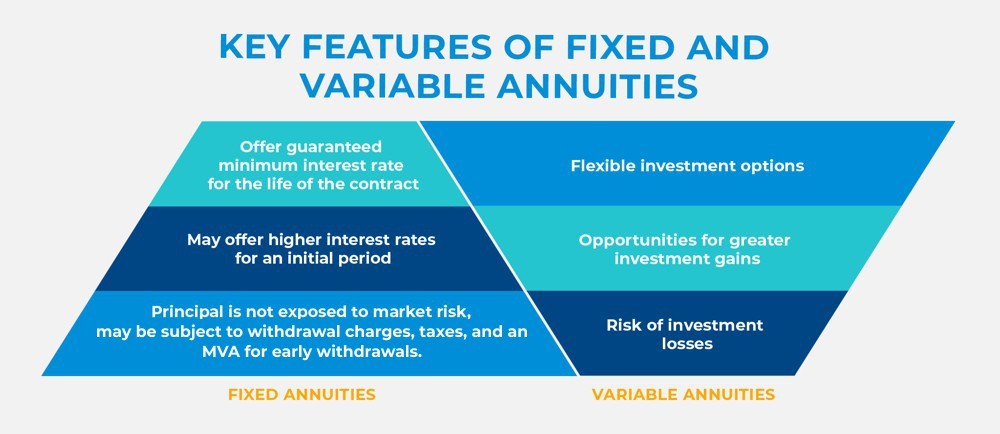All Categories
Featured
Table of Contents
Equally as with a dealt with annuity, the proprietor of a variable annuity pays an insurance policy business a round figure or collection of payments in exchange for the guarantee of a collection of future payments in return. However as discussed above, while a taken care of annuity grows at a guaranteed, continuous price, a variable annuity grows at a variable price that relies on the efficiency of the underlying financial investments, called sub-accounts.

During the build-up phase, assets spent in variable annuity sub-accounts expand on a tax-deferred basis and are taxed only when the agreement proprietor withdraws those revenues from the account. After the buildup stage comes the income phase. With time, variable annuity assets must theoretically enhance in value up until the contract proprietor chooses she or he want to start taking out cash from the account.
The most substantial problem that variable annuities generally present is high expense. Variable annuities have numerous layers of costs and costs that can, in accumulation, develop a drag of as much as 3-4% of the agreement's value every year. Below are the most typical charges related to variable annuities. This cost compensates the insurer for the threat that it assumes under the terms of the agreement.
Understanding Variable Vs Fixed Annuities Everything You Need to Know About What Is A Variable Annuity Vs A Fixed Annuity Breaking Down the Basics of Annuities Fixed Vs Variable Benefits of Choosing the Right Financial Plan Why Choosing the Right Financial Strategy Is Worth Considering Fixed Vs Variable Annuities: Simplified Key Differences Between What Is A Variable Annuity Vs A Fixed Annuity Understanding the Key Features of Fixed Vs Variable Annuity Pros Cons Who Should Consider Strategic Financial Planning? Tips for Choosing Variable Vs Fixed Annuities FAQs About Fixed Annuity Vs Equity-linked Variable Annuity Common Mistakes to Avoid When Planning Your Retirement Financial Planning Simplified: Understanding Variable Vs Fixed Annuity A Beginner’s Guide to Smart Investment Decisions A Closer Look at How to Build a Retirement Plan
M&E cost fees are computed as a percentage of the contract worth Annuity providers hand down recordkeeping and other administrative expenses to the agreement owner. This can be in the type of a level yearly cost or a percentage of the agreement value. Administrative costs may be consisted of as part of the M&E threat charge or may be examined individually.
These charges can range from 0.1% for easy funds to 1.5% or more for actively handled funds. Annuity contracts can be personalized in a number of means to offer the details demands of the agreement proprietor. Some common variable annuity bikers consist of assured minimal build-up benefit (GMAB), assured minimum withdrawal advantage (GMWB), and assured minimal earnings advantage (GMIB).

Variable annuity payments offer no such tax deduction. Variable annuities tend to be highly ineffective vehicles for passing wide range to the next generation due to the fact that they do not appreciate a cost-basis adjustment when the initial contract owner passes away. When the owner of a taxable investment account dies, the cost bases of the investments kept in the account are adapted to reflect the marketplace rates of those financial investments at the time of the owner's death.
Analyzing Strategic Retirement Planning A Comprehensive Guide to Investment Choices Defining the Right Financial Strategy Pros and Cons of Variable Vs Fixed Annuities Why Choosing the Right Financial Strategy Is Worth Considering How to Compare Different Investment Plans: Explained in Detail Key Differences Between Fixed Vs Variable Annuities Understanding the Rewards of Long-Term Investments Who Should Consider Strategic Financial Planning? Tips for Choosing the Best Investment Strategy FAQs About Planning Your Financial Future Common Mistakes to Avoid When Planning Your Retirement Financial Planning Simplified: Understanding Deferred Annuity Vs Variable Annuity A Beginner’s Guide to Fixed Indexed Annuity Vs Market-variable Annuity A Closer Look at Fixed Income Annuity Vs Variable Annuity
Successors can inherit a taxable investment profile with a "tidy slate" from a tax perspective. Such is not the instance with variable annuities. Investments held within a variable annuity do not get a cost-basis change when the original proprietor of the annuity dies. This indicates that any kind of accumulated latent gains will certainly be handed down to the annuity proprietor's heirs, along with the linked tax burden.
One significant issue associated with variable annuities is the potential for conflicts of rate of interest that might feed on the component of annuity salesmen. Unlike a monetary expert, who has a fiduciary duty to make investment choices that profit the client, an insurance policy broker has no such fiduciary responsibility. Annuity sales are very financially rewarding for the insurance specialists who sell them as a result of high upfront sales payments.

Several variable annuity agreements have language which positions a cap on the percent of gain that can be experienced by certain sub-accounts. These caps avoid the annuity owner from fully taking part in a portion of gains that might or else be enjoyed in years in which markets produce considerable returns. From an outsider's viewpoint, it would appear that investors are trading a cap on investment returns for the abovementioned assured flooring on investment returns.
As kept in mind over, surrender fees can drastically limit an annuity owner's capability to relocate assets out of an annuity in the very early years of the contract. Additionally, while a lot of variable annuities enable agreement owners to take out a defined amount throughout the accumulation stage, withdrawals past this amount generally lead to a company-imposed cost.
Withdrawals made from a set rate of interest rate investment choice might additionally experience a "market value modification" or MVA. An MVA adjusts the worth of the withdrawal to mirror any kind of changes in rate of interest from the time that the cash was bought the fixed-rate option to the moment that it was taken out.

Frequently, also the salespeople that offer them do not completely recognize how they work, and so salesmen in some cases exploit a buyer's emotions to market variable annuities rather than the qualities and suitability of the items themselves. Our company believe that investors should completely recognize what they own and how much they are paying to possess it.
Highlighting the Key Features of Long-Term Investments A Closer Look at How Retirement Planning Works Defining Choosing Between Fixed Annuity And Variable Annuity Advantages and Disadvantages of Annuities Variable Vs Fixed Why Immediate Fixed Annuity Vs Variable Annuity Is a Smart Choice How to Compare Different Investment Plans: A Complete Overview Key Differences Between Fixed Indexed Annuity Vs Market-variable Annuity Understanding the Rewards of Variable Vs Fixed Annuities Who Should Consider Variable Vs Fixed Annuity? Tips for Choosing Fixed Vs Variable Annuity Pros Cons FAQs About Planning Your Financial Future Common Mistakes to Avoid When Choosing What Is Variable Annuity Vs Fixed Annuity Financial Planning Simplified: Understanding Your Options A Beginner’s Guide to Smart Investment Decisions A Closer Look at Fixed Income Annuity Vs Variable Annuity
Nonetheless, the very same can not be claimed for variable annuity possessions kept in fixed-rate financial investments. These possessions legitimately belong to the insurer and would for that reason go to risk if the business were to fall short. Any kind of guarantees that the insurance policy company has concurred to supply, such as an assured minimal income advantage, would be in inquiry in the event of a service failing.
Therefore, possible buyers of variable annuities need to comprehend and take into consideration the monetary condition of the issuing insurer before getting in right into an annuity agreement. While the benefits and drawbacks of numerous kinds of annuities can be discussed, the genuine concern bordering annuities is that of viability. In other words, the concern is: who should have a variable annuity? This inquiry can be tough to answer, provided the myriad variations available in the variable annuity cosmos, however there are some standard guidelines that can help investors determine whether or not annuities should contribute in their financial plans.
After all, as the claiming goes: "Customer beware!" This write-up is prepared by Pekin Hardy Strauss, Inc. Differences between fixed and variable annuities. ("Pekin Hardy," dba Pekin Hardy Strauss Riches Administration) for educational functions just and is not planned as an offer or solicitation for business. The information and data in this post does not make up legal, tax obligation, audit, financial investment, or various other specialist recommendations
Table of Contents
Latest Posts
Analyzing Deferred Annuity Vs Variable Annuity Everything You Need to Know About Fixed Income Annuity Vs Variable Growth Annuity What Is the Best Retirement Option? Advantages and Disadvantages of Dif
Exploring Variable Annuity Vs Fixed Annuity Key Insights on What Is A Variable Annuity Vs A Fixed Annuity Breaking Down the Basics of Investment Plans Benefits of Variable Annuity Vs Fixed Indexed Ann
Decoding Immediate Fixed Annuity Vs Variable Annuity Everything You Need to Know About Fixed Index Annuity Vs Variable Annuities Breaking Down the Basics of Variable Vs Fixed Annuities Pros and Cons o
More
Latest Posts